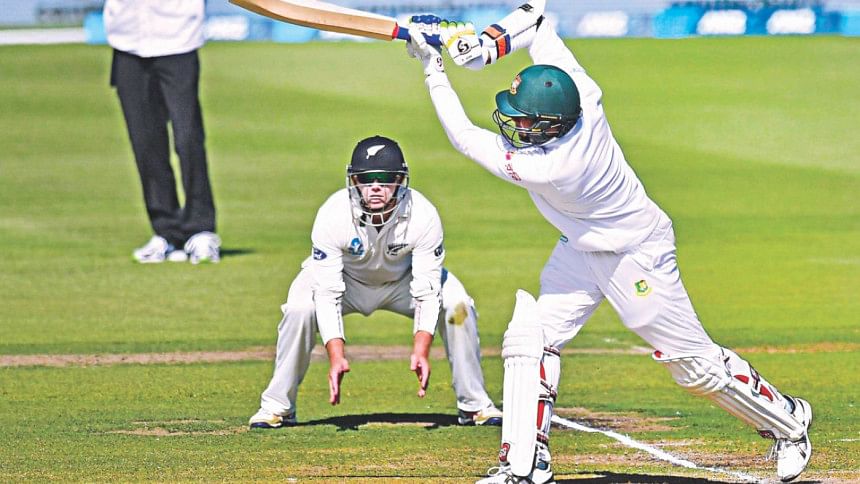Apt end to a tour of lost opportunities

When Bangladesh returned after a 10-minute innings break to open their second essay an hour before lunch on the fourth day of the second Test against New Zealand yesterday, one thing they wanted to avoid was a repeat of their second-innings collapse in the opening Test.
Although there was a gap of a week and they were playing on a different surface under brilliant sunshine after a day of rain-induced rest, the Tigers somehow rediscovered that self-destruct mode.
The only difference from that inexplicable surrender in Wellington, where they had a 56-run first innings lead, was that they started with a 65-run deficit at the Hagley Oval. They surrendered for 173 this time, 13 runs more than they achieved at the Basin Reserve. But had it not been for a 51-run ninth-wicket stand between Taskin Ahmed and Kamrul Islam the innings could have folded much earlier. For the record it was the highest stand of the innings.
The outcome: a nine-wicket defeat with a day to spare and a 2-0 Test series whitewash following their 6-0 thrashing in the limited-overs series.
After Bangladesh were reduced to 115 for eight shortly after the tea break, Taskin and Kamrul were playing as if they were fighting for the pride of a battered cricketing nation. They should not have done that in protest against what their more established batsmen had done to damage that dignity and pride.
They had no business to take a few blows to the body or to their helmets when the senior statesmen of the team, including captain Tamim Iqbal and his deputy Shakib Al Hasan, threw away their wickets in reckless fashion. You can however replace the word 'reckless' with 'a style of their own' because they always prefer to be described that way.
Bangladesh were desperately in need of a resolute approach at least for an hour to put the pressure back on the hosts and the immediate job in hand was to wipe out that deficit. But Tamim chose the spectacular way. He swung and missed the first bouncer he faced from Tim Southee. Hot under his collar, he repeated it in the same over and could only manage to top-edge to square leg where Mitchell Santner took a diving catch. The captain, who was supposed to lead the team by example, departed for four and Bangladesh lost their first wicket with only 17 runs on the board.
The other opener, Soumya Sarkar, and one-down Mahmudullah Riyad took the score to 58 when the former slashed at a harmless delivery from Colin de Grandhomme to gully where Jeet Raval took a spectacular diving catch. That particular catch defined the mood of the whole Test in which Bangladesh dropped as many as six regulation catches in New Zealand's first innings. And this number is an astonishing 20 from both sides as far as the whole series is concerned. If you drop that many catches you are not supposed to win a game.
The departure of Soumya brought vice-captain Shakib to the crease. He played seven balls and he could have been easily out twice off the first two balls he faced. It was not that those were unplayable deliveries from Grandhomme, the bowler was actually pushing the ball through the wind to get some swing. Shakib swung his bat to the first ball he faced. He got a thick edge and the ball raced between the slips for four. He charged down the wicket the next ball he faced from Grandhomme. The ball flew to second slip where Raval dropped him.
The horrible Shakib show continued. This time he tried to chance his arms against Southee. It was a clever field placement from New Zealand captain Kane Williamson. Five fielders were positioned behind square on the off-side to stop Shakib from scoring runs through that area with his favourite cut shot. The left-hander was however least bothered and slashed one in the air only to be caught at gully after scoring eight runs. This shot in particular and his approach in the second innings demands a national inquiry and a medical board for a better understanding about that self-destructive approach that he simply refuses to compromise.
There are a number of reasons for Bangladesh's failure in the two Tests from good positions; some are tactical and others technical. But the biggest problem was their mental approach in a series of lost opportunities.

 For all latest news, follow The Daily Star's Google News channel.
For all latest news, follow The Daily Star's Google News channel. 



Comments